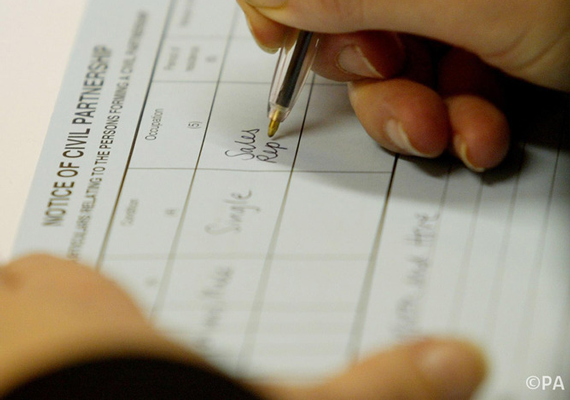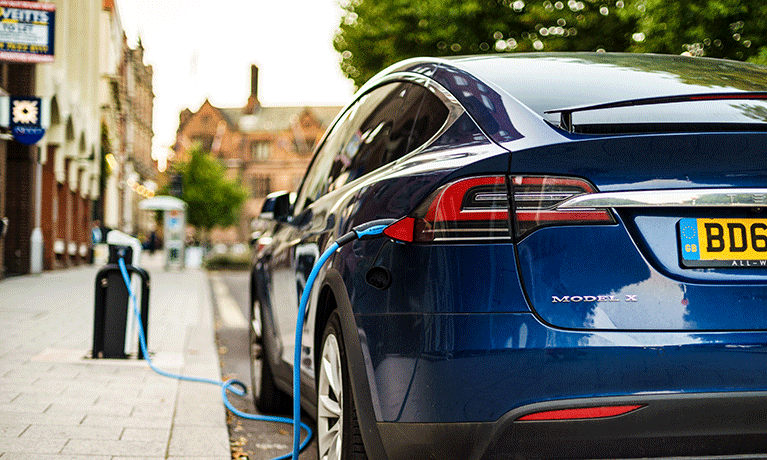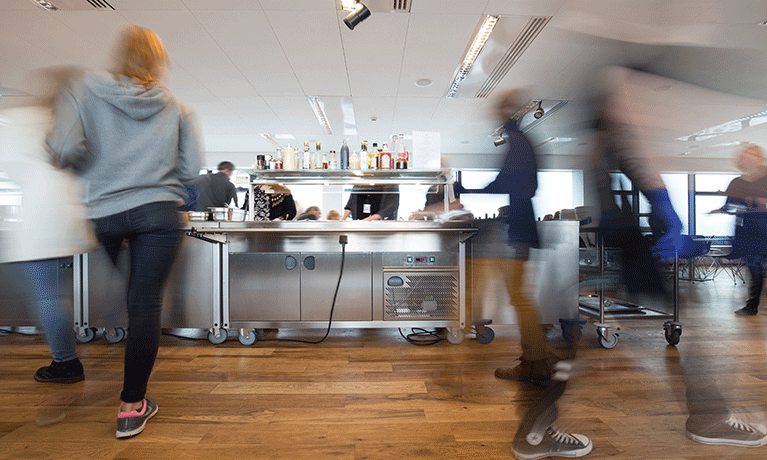Mike Ullett and Gino Meriano enter one of the UK’s first civil partnerships, 2005. Gareth Fuller/PA
Guest post by Adam Jowett, Centre for Psychology, Behaviour and Achievement & Elizabeth Peel (University of Worcester)
It’s ten years since the UK’s first civil partnership took place. On December 5 2005 Matthew Roche and Christopher Cramp had the 15–day waiting period waived because Roche was suffering from a terminal illness. The first registered partnerships followed on December 19 in Northern Ireland, December 20 in Scotland and December 21 in England and Wales.
For the first time in the UK, same-sex couples could have their relationships legally recognised, giving them access to rights and responsibilities previously reserved for married couples. And ten years on, same-sex couples can now marry in England, Wales and Scotland. But same-sex marriage hasn’t replaced civil partnerships – it’s given same-sex couples a choice.
Since the introduction of same-sex marriage in March 2014, many same-sex couples have been converting their civil partnerships to a marriage and, the number of civil partnerships formed in England and Wales has fallen by 70%.
But the era of the civil partnership is far from over: the equal civil partnership campaign is arguing that civil partnerships should be made available to all couples, regardless of sex or sexual orientation. Why?
Come one, come all
The campaign is not only arguing that all people should be equal under law, but also making the feminist argument that marriage is a sexist institution, typified by traditions such as fathers “giving the bride away” and the archaic wording of the marriage service in which some brides vowing to obey their husbands. The notion is that civil partnership provides a “modern alternative” to marriage, free from marriage’s historical baggage.
Of course, there were calls for civil partnership to be open to opposite-sex couples (not to mention siblings living together) while the Civil Partnership Bill was originally being debated. At the time, such calls were deemed to be undermining the purpose of the Bill, which was to provide same-sex couples with the legal rights and protections associated with marriage.
Had the previous Labour government given opposite-sex couples the option of civil partnership while not giving same-sex couples the option of marriage, it would arguably have made what was designed as a piece of equality legislation appear unfair. And yet we now find ourselves in the opposite situation.
While same-sex couples in England, Scotland and Wales can choose between civil partnership and marriage, opposite-sex couples have only one option. Conservative MP Tim Loughton, who was opposed to the introduction of same-sex marriage, recently took a Bill to the Commons asking for an amendment to existing legislation to allow opposite-sex couples to enter a civil partnership. And permission has now been granted for a judicial review to take place in January 2016.
But what do same-sex couples in civil partnerships make of all this?
Equal and unequal
We’re currently gathering the views and experiences of people who’re already in a civil partnership or same-sex marriage through an online survey. One of the questions we are asking is what they think should happen to civil partnership now, and why – and we’ve already had a wide range of answers.
Many of those who have taken part so far think civil partnerships should be open to all on a basic principle of equality. Others believe they should be an option for all principally to offer an alternative for those who view marriage as intrinsically associated with religion.
But other opinions are surfacing too. Some have said that civil partnership should be scrapped altogether now marriage equality is achieved, perhaps with a “grandfather clause” for those already in a civil partnership. They saw civil partnership as a stepping-stone to full marriage equality and see no difference between civil partnership and marriage. For them, formal equality is important, but having two forms of legal recognition practically identical in all but name is confusing and nonsensical.
Whatever works for you? Gareth Fuller/PA
On the other hand, one respondent who has chosen not to convert their civil partnership to a marriage, believes that civil partnership should be opened to all and that marriage should be abolished.
Others take issue with the idea that heterosexuals are discriminated against. Some even find it “insulting” that opposite-sex couples should act like they’ve been excluded from an institution which itself was only created to reserve the privileged status of marriage for heterosexuals. They also argue that full marriage equality has not been achieved across the UK for same-sex couples.
True enough: marriage equality legislation was devolved and has not yet been introduced in Northern Ireland. While the Northern Ireland assembly has voted in favour of marriage equality, the DUP vetoed the legislation.
This not only affects Northern Irish same-sex couples, but also means that the marriages of same-sex couples in England, Scotland or Wales may not be recognised as such if they were to move even within the UK. (The High Court in Belfast has now found that Northern Ireland’s gay marriage ban amounts to state discrimination.)
This range of responses perhaps reflects the range of meanings ascribed to civil partnerships ever since they were proposed.
Not there yet?
In a previous study, we examined how civil partnership were represented in the media at the time the first partnerships took place. The dominant way it was presented was as being the same as marriage in all but name. Civil partnership was routinely described in the press as gay or same-sex “marriage”.
Yet at the same time, civil partnership was also being presented as inferior to marriage – as being like marriage, but not the “real McCoy”. Very rarely did the media describe it as different to marriage but nevertheless its equal.
When civil partnership is understood as marriage by another name or, alternatively, as a historic stopgap between full equality and no rights at all, it’s perhaps not surprising that some lesbians and gay men might find it difficult to see opposite-sex couples as the victims of an injustice.
And while many same-sex couples do support the equal civil partnership campaign on the principle of equality, it remains to be seen whether people are fully convinced of the need for two virtually identical forms of legal recognition.
If you are planning, are currently in or have previously been in a civil partnership or same-sex marriage and would like to take part in our survey about what it means to you, please click here.
Originally written for ‘The Conversation’.





Comments are disabled